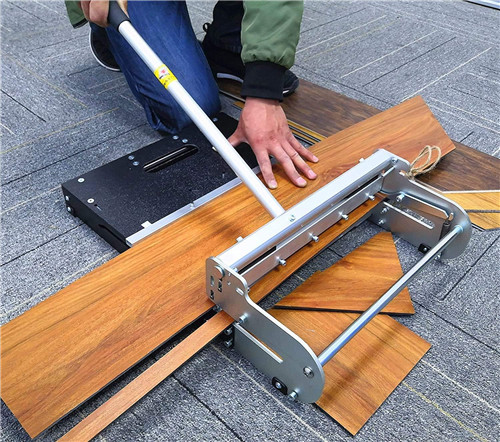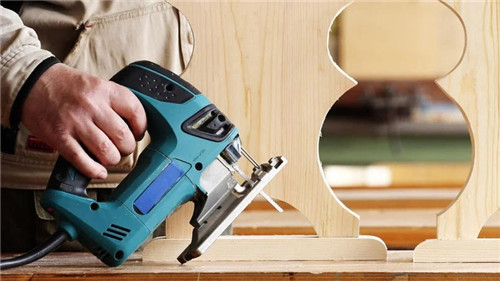PVC panels feature more and more in many indoor and outdoor projects where durability, moisture resistance, and low maintenance are mostly required. Whether you’re looking to install wall panels in the bathroom, build a decorative feature wall, or work on an outdoor project, knowing how to properly cut PVC panels is important for a great finish. It will teach you the tools and techniques necessary for effective cutting of PVC panels to give your project that polished, professional look.
Tools for Cutting PVC Panels
Want to cut PVC panels? Before you get started, look through the list of tools and materials that will be required for the work:
Measuring Tape: Measurement forms the basis of an accurate cut. A good measuring tape would do to measure and mark the panels precisely.
Straight Edge/Ruler: A straight edge or ruler must be at hand while drawing straight-cut lines on your PVC panels.
Pencil or Marker: Pencil or marker, preferably a marker, as it can easily be visibly seen, especially on lighter-colored panels, to mark clearly on the panels according to the cutting lines.
Utility Knife: A utility knife can be quite useful in scoring and cracking thin PVC panels. A sharp blade on the knife will bring out clean cuts.
Saw: For hard PVC panels, you will be using either a circular saw or a jigsaw. You can manage chipping or wounding by using a fine-toothed saw blade. You can get one with a grit specifically made for cutting plastics.
Fine-Toothed Blade: A fine-toothed blade is highly recommended due to the nature of saw operations. This would ensure minimal chipping and produce crisp cuts.
Clamps: These hold panels tightly for ease of clean cuts. Without clamps, the panel may move around because of improper holding, thus resulting in an accident and poor work.

The Proper Way to Cut PVC Sheets
1. Measure and mark.
First, measure the length and width of the panel you are going to cut. The measurements should be correct so that the installation of the panels can proceed without any problems. Take your ruler or straight edge to connect your spots in a straight line. Using a pencil or marker, mark the cutting line clearly so that it can be seen.
2. Choose the right cutting tool.
You could make use of a utility knife, especially with the thinner PVC panels. With these panels, you would cut them by running the utility knife over the separating line for a deep score several times, after which you could snap the panel cleanly off the score line. A better option for thick PVC panels is to use a fine-toothed circular saw or jig. These will enable you to have adequate force to cut through thicker material and make a smooth, straight cut.
3. Secure the panel.
Lay the PVC panel flat on a steady work surface. Use clamps to secure the panel tightly in place to avoid shifting the panel when being cut. This is important both for precise cuts and for safety.
4. Utility Knife Section End
Make the utility knife follow the line that is marked. Using the knife, score the panel while applying firm and even pressure. Do this two to three times until a deep groove can be felt. When the groove is deep, carefully bend the panel at the scored line—it will break in two. This method is great for making straight cuts on thinner panels.
5. Circular Saw or Jigsaw Cutting
Have your saw set up with a fine-toothed blade. Line the saw blade up with the marked line. Turn on the saw and, gradually, push it along the cutting line. Keep a steady hand and an even speed for a straight, smooth cut. Use a jigsaw for cutting curved lines or irregular shapes. Keep following the marked line while guiding the saw steadily to the desired shape.
6. Smooth the edges.
You’ll be left with a small, rough edge or burr after you cut. Use sandpaper or a deburring tool to ensure your edges are smooth and clean. Sanding the edges won’t only smooth your cutout from abrasion; it will also protect your fingers from accidents due to sharp or ragged edges.
Detailed Tips for Cutting PVC Panels
- Measure twice, and cut once. Incorrect measurements equate to mistakes. Good measurements make for good cuts.
- Use only sharp blades. Dull blades will chip and result in uneven cuts. Always use sharp, fine-toothed blades for the best results.
- Slow, steady cuts. Rushing a cut is going to result in mistakes and uneven edges. Take your time with a smooth, accurate cut.
How to Cut PVC Wall Panels
Wall Coverings
In most installations, PVC panels are used for wall cladding in bathrooms, kitchens, and other wet applications. The panels are required to be cut to install fixtures and fittings and to maintain the appearance of a virtually seamless installment. The moisture-resistive character of PVC both alludes to its durability and the reduced need for maintenance under application conditions.
Ceiling Panels
PVC panels need to be installed around lights and vents, so the cutting may not be done as perfectly. This is because most ceiling installations require careful measurement and cutting so that such panels would fit snugly around fixtures and at edges.
Decorative Features
PVC panels can be used to create moldings and wainscoting. The general versatility in handling makes it possible to cut them into desired shapes and sizes. The wide range of colors and textures within the PVC panels offers great leeway for fruitful creative interior design works.
Durable
These will also make good fencing, decking, and garden features since they are strong, weather-resistant, and can easily be trimmed to any space. The strength of PVC and its requirement for minimal maintenance make it very suitable for outdoor projects.

The Safety Precautions of Cutting PVC Panels
Like any other do-it-yourself project, working with PVC panels requires taking some safety measures. Among the most important are a few of the following safety considerations:
Work in well-ventilated areas: Cutting PVC panels produces a small amount of dust. Work in well-ventilated spaces with close observation of dust extraction as your priority to keep the atmosphere clean and safe.
Hold the Work Area: Be sure your working area is stable and holds on to the panels very tightly, clamping them down very tightly with any kind of clamp, so no movement can occur when cutting.
Use Tools Correctly: Engage equipment as per recommendations by the manufacturer. Ensure the blades are installed correctly and kept sharp to avoid cutting-related mishaps.
Prevent Kickback: Kickback is a severe problem when using power saws. Always grasp the saw tightly during the cut with a smooth, stable motion.
PVC Panel Cutting Techniques
For more extended runs of tracts, people may resort to advanced cutting techniques. Here are a few in vogue:
Table Saw
A table saw yields very accurate cuts and is most accurate for straight lines and multiple identical cuts. Set the fence to the width needed, and feed the panel slowly through the saw to make an accurate cut.
Using a Miter Saw
A miter saw is very handy for angled cuts. You simply set the angle on the saw, clamp the panel down, and make the cut. This works especially well when you are trying to make corner joints, etc.
Cutting Complex Shapes with a Jigsaw
For complex shapes, details, or curves, you probably need to use a jigsaw; if you do, be sure to use a fine-tooth blade. And work slowly so that you can keep your layout lines on the money. While this technique is time-consuming, the outcomes will be more than sufficient for the average decorative pattern or custom design.
Chipped edges: dull blade. Make sure to use a sharp blade designed for cutting plastic. Uneven cuts: cutting too fast, or the work surface wasn’t stable. Slow down. Make sure the panel is firmly clamped.
Difficulty Snapping Scored Panels: If your panel doesn’t snap easily after scoring, your score line likely isn’t deep enough. Score the line a few more times to deepen it before attempting to snap again.

Common Applications for Cut PVC Panels
This proves that a PVC panel is such a versatile material and can be used for various purposes. Here are some popular applications:
Wall Cladding
PVC panels clad the walls in bathrooms, kitchens, and other areas that are naturally characterized by high moisture levels. The panels have to be cut around many fixtures and fittings to ensure the finished installation is completely seamless. The high humidity is where PVC is best suited for general use in such environments, thereby ensuring ease, long service life, and ease of low-maintenance service.
Ceiling Panels
Very lightweight and easily installed, PVC panels are among the materials most commonly used for ceiling coverings. In some applications, such as cutting away for lights or vents, the customization may require especially precise cuts; cutting them to fit around ceiling lights and many fixtures is fairly easily done. Many ceiling applications also end up requiring careful measurement and cutting so that everything fits snugly against fixtures and along edges.
Decorative Features
PVC panels can be used to create decorative wall features, such as wainscoting or accent walls. PVC panels can be cut into desired shapes and sizes for beautiful design effects. The wide color and texture range of PVC paneling opens up endless creative interior design project opportunities.
Outdoor Projects
Naturally, the damaging effects of weather are withstood by these PVC panels, which are therefore suitable for outdoor applications such as fencing, decking, and garden features. The cutting of the panels makes it perfect as per their installation in the exact place. The material proves to be aptly recommended for use in outdoor applications, as outdoor projects can last longer with its qualities of low maintenance and durability. Follow these steps, and you’ll know how to make clean and accurate cuts for professional, sanded PVC panel installation. Be it a do-it-yourselfer or a professional installer, mastery of this craft enhances the quality and versatility that one can execute on a project. Proper preparation, accurate measurements, and careful cutting are the keys to success.
Conclusion
Cutting PVC panels can be something of a daunting prospect, but the right tools and approaches make it easy and very rewarding. With this detail-packed guide to cutting PVC panels, you will be working like a pro, and your PVC panel installation will be professional and polished. Learning how to cut PVC panels is a great way for both DIYers and professional installers to boost the quality and applicability of their work. The key to success lies in appropriate preparation, exact measurements, and careful cutting. Practice will yield confidence and expertise, making your projects look seamless and professional.
Know more at:
Acrylic vs PVC Panels
Are PVC Panels Worth It?
PVC Panels: Are They a Good Choice?
Post time: Sep-11-2024
